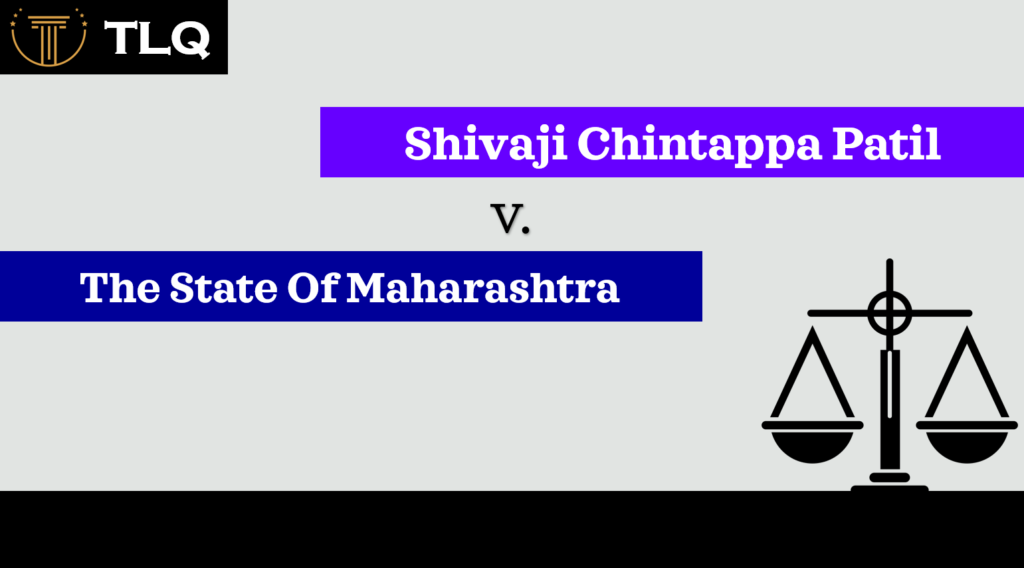Published on 15th June 2025
Authored By: Adv. Laxman Dagdu Palhal
Introduction
The case of Bachan Singh v. State of Punjab [1980] 2 SCC 684 is a landmark judgment by the Supreme Court of India that played a crucial role in defining the constitutional validity of the death penalty under Indian law. The case primarily dealt with the interpretation of Section 302 of the Indian Penal Code 1860 (IPC) and the provisions of Section 354(3) of the Code of Criminal Procedure 1973 (CrPC). This judgment established the “rarest of rare” doctrine, which serves as the guiding principle for awarding the death penalty in India.
Background of the Case
Bachan Singh was convicted and sentenced to death for the murder of three members of his family. The case reached the Supreme Court on the question of whether the death penalty, as provided under Section 302 IPC, violates Article 21 of the Indian Constitution, which guarantees the right to life and personal liberty. The appellant contended that the imposition of the death penalty was arbitrary and discriminatory, thereby violating fundamental rights.
Issues Raised
- Whether the death penalty as prescribed under Section 302 IPC is constitutionally valid?
- Whether the imposition of the death sentence violates Articles 14, 19, and 21 of the Indian Constitution?
- What are the guidelines for awarding the death penalty under Section 354(3) CrPC?
Arguments by the Appellant
- The death penalty is an inhumane and cruel punishment that contravenes Article 21 of the Constitution.
- The imposition of the death penalty is arbitrary and unfair since it depends on the discretion of the judiciary, leading to inconsistency in sentencing.
- Section 302 IPC and Section 354(3) CrPC provide unfettered discretion to judges without specific guidelines, violating the principle of equality under Article 14.
- Alternative punishments such as life imprisonment should be preferred over the death penalty to align with the principles of justice and reformative jurisprudence.
Arguments by the Respondent (State of Punjab)
- The death penalty is a constitutionally valid punishment and is necessary to maintain law and order.
- The legislature, while enacting laws, has given the judiciary discretion to decide on the punishment based on the facts and circumstances of each case.
- The death penalty serves as a deterrent against heinous crimes and ensures justice for the victims and society at large.
- The safeguards provided under CrPC, particularly Section 354(3), ensure that the death penalty is not imposed arbitrarily.
Judgment
The Supreme Court, in a 4:1 majority decision, upheld the constitutional validity of the death penalty. However, it emphasized that capital punishment should only be imposed in the “rarest of rare” cases.
Key Findings of the Court
- Constitutional Validity of the Death Penalty
- The Court held that the death penalty per se is not unconstitutional. It does not violate Articles 14, 19, or 21 of the Constitution.
- The legislative intent behind Section 302 IPC was to provide discretion to the judiciary in awarding either life imprisonment or the death penalty.
- Principle of “Rarest of Rare” Cases
- The Court introduced the doctrine of the “rarest of rare” cases to ensure that the death penalty is awarded only in exceptional circumstances where the alternative punishment of life imprisonment is inadequate.
- The judgment laid down that the crime must be of an extremely grave nature, shocking the conscience of society, to warrant the death penalty.
- The Court provided a broad framework for judges to consider the mitigating and aggravating factors before imposing capital punishment.
- Guidelines for Sentencing
- The Court held that Section 354(3) CrPC requires judges to provide “special reasons” for awarding the death penalty.
- The sentencing court must consider the circumstances of the crime as well as the character and socio-economic background of the offender.
- Factors such as the brutality of the crime, the manner in which it was committed, and the possibility of reform and rehabilitation of the offender should be considered.
- Dissenting Opinion
- Justice Bhagwati, in his dissenting opinion, argued that the death penalty is unconstitutional and violates the fundamental right to life under Article 21.
- He contended that capital punishment is discriminatory and arbitrary in its application, as it depends on the subjective satisfaction of the judge.
- He advocated for the abolition of the death penalty in favor of life imprisonment.
Impact of the Judgment
- Established the “Rarest of Rare” Doctrine
- The decision in Bachan Singh became the foundation for future cases dealing with the death penalty in India.
- Courts now follow the principle that the death sentence should only be imposed in cases where life imprisonment is inadequate due to the nature of the crime.
- Guided Judicial Discretion
- The ruling clarified that while judges have discretion in sentencing, they must adhere to strict guidelines and record “special reasons” when awarding the death penalty.
- This ensured a more structured and reasoned approach to capital punishment, reducing the scope for arbitrary sentencing.
- Influence on Subsequent Cases
- The judgment influenced various subsequent cases, including Machhi Singh v. State of Punjab [1983] 3 SCC 470 and Dhananjoy Chatterjee v. State of West Bengal [1994] 2 SCC 220, which further elaborated on the “rarest of rare” doctrine.
- It also played a crucial role in the evolving jurisprudence regarding mercy petitions and the commutation of death sentences.
- Debate on the Death Penalty
- Bachan Singh reignited discussions on the abolition of the death penalty in India.
- While the Court upheld capital punishment, it also recognized the need for extreme caution in its application, aligning India with global human rights perspectives.
Conclusion
The judgment in Bachan Singh v. State of Punjab remains one of the most significant rulings in the history of Indian criminal jurisprudence. By upholding the constitutional validity of the death penalty while simultaneously restricting its application through the “rarest of rare” doctrine, the Supreme Court sought to balance justice, deterrence, and human rights concerns. The principles laid down in this case continue to guide the Indian judiciary in matters concerning capital punishment, ensuring that it is awarded only in the most heinous and exceptional cases.



